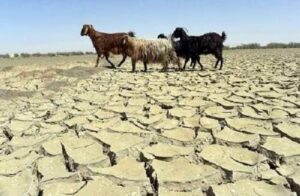
KABUL (SW) – A recent nutrition survey across Afghanistan shows that an estimated 2 million children under 5 years and 485,000 pregnant and lactating women are affected by acute malnutrition annually.
The nutritional situation in Afghanistan continues to be alarming. Ongoing conflict, low access to basic services, and impact of natural disasters have exacerbated the existing vulnerabilities of communities, contributing towards high rates of acute malnutrition, the report said.
The findings of most recent nutrition surveys across Afghanistan show that 22 out of 34 provinces are currently above the emergency level threshold of acute malnutrition based on WHO classification of wasting rates for children under the age of five (global acute malnutrition (GAM) ≥10 per cent with aggravating factors).
The impact of drought in 2018 is likely to extend through mid-2019 (next harvest period), further aggravating the poor nutritional situation. Annually, an estimated 2 million children under the age of five and 485,000 pregnant and lactating women (PLW) are affected by acute malnutrition. About 75 percent of acute malnourished children under five are in twenty-two high priority provinces, it added.
Children under the age of five and pregnant & lactating women (PLW) are the most vulnerable population groups to acute malnutrition.
The report noted among the 2 million children under the age of five years who are suffering from acute malnutrition in Afghanistan, a staggering 600,000 children (29 percent) are suffering from severe acute malnutrition (SAM), which is the most dangerous form of undernutrition in children.
Children suffering from SAM are nine times more likely to die than their healthy peers 3 and those suffering from prolonged undernutrition who survive may become locked in a cycle of recurring illness and faltering growth, with irreversible damage to their development and cognitive abilities. Women of reproductive age and adolescent girls affected by undernutrition have adverse effects on their own health as well as later on the birth outcome of infants, such as low birth weight (LBW) infants, causing inter-generational cycle of undernutrition, it added.
ENDS





